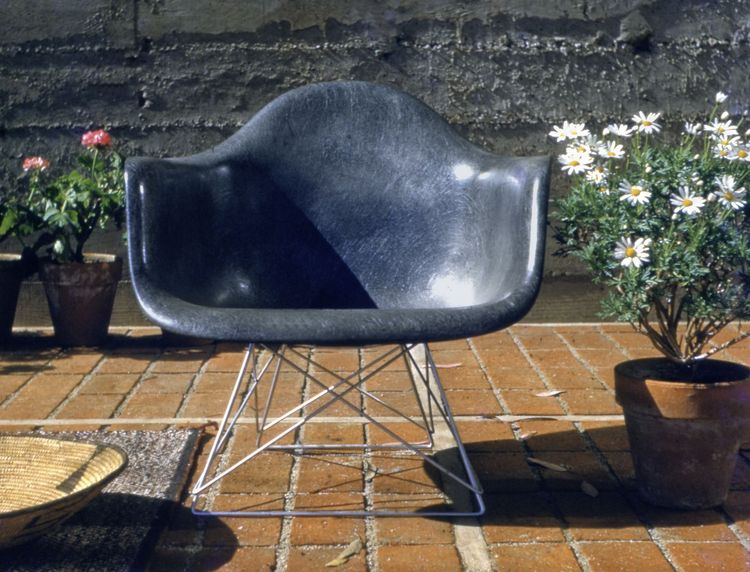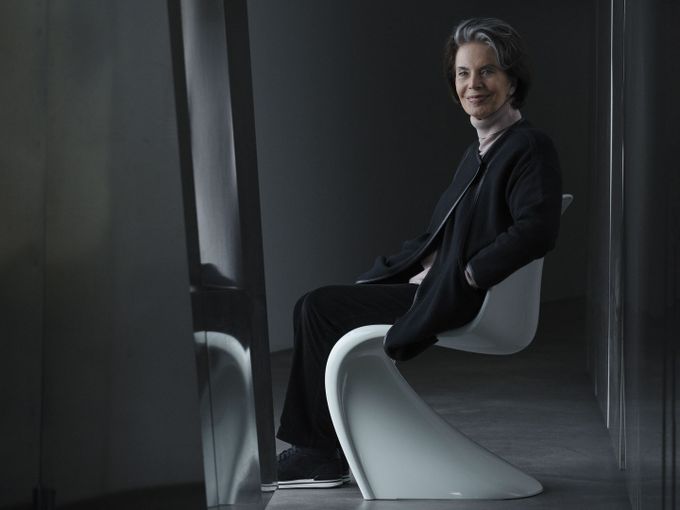ProduitsChaisesFauteuilsCanapésSièges de bureauChaises longuesTabourets et bancsSculpturesSièges conférenceSièges pour aéroportsRangementMicro architectureTables de salle à mangerTables de caféTables basses et tables d’appointBureauxSystèmes de mobilier de bureauSystèmes de conférenceLumièresHorlogesObjets décoratifsPorte-manteaux et étagères muralesPlateaux et vaissellesNouveauBest-sellerRapidement disponibleCouleurs & matériauxAlexander Girard Antonio CitterioBarber OsgerbyCharles & Ray Eames George NelsonHella JongeriusIsamu NoguchiLounge chair finderOffice chair finderGift finderEntretien & réparationPièces de rechangeProduits d'entretienGarantie du fabricantVitra Circle StoresLounge Chair & OttomanHang it allInspirationsSéjourSalle à mangerHome OfficeChambre d'enfantsExtérieurHome StoriesAugmented RealityCouleurs & matériauxHome SelectionEspace de travailConcentrationRéunionAteliersClub OfficeCitizen OfficeStudio OfficeDynamic SpacesEspace de réceptionAéroportsÉducationCo-WorkingHealthcareNos clientsDestination WorkplaceÀ l’heure des classiquesChaises de bureauDancing OfficeHome StoriesHome Selection : tisus de Kvadrat et DedarAugmented Reality - faites entrer les produits Vitra dans votre maisonL'École de design : Valoriser le travail et les connaissancesÀ l’heure des classiquesCouleurs & matériauxUne maison accueillante Un paysage de bureaux - sans murs ni cloisonsConfort et durabilité réunisUn espace de premier plan pour une grande école d'artServicesEntretien & réparationPièces de rechangeProduits d'entretienGarantie du fabricantFAQ et contactGuides d'utilisationConsulting & Planning StudioVitra Circle StoresConseils & planification dans la VitraHausGuides d'utilisationInstructions d'entretien pour l'extérieurRéparation, entretien, remise en état au Vitra Circle Store Campus ProfessionalsDonnées CAOFiches produitsCertificatsRapport sur le développement durableGuides d'utilisationInformations écologiquespConExemples de planificationCouleurs et matériauxCertificats et normesHome SelectionLogin revendeurNos clientsMyntDestination Workplace: Rendez visite à nos clients et partenairesAnagram SofaMikadoTyde 2 sur roulettesACXDancing OfficeSièges de bureauMagazineHistoiresEntretiensExpositionsDesignersLe Projet VitraA Capsule in TimeSeeing the forest for the treesRefining a classicMynt is a lifetime achievement to meA desk like a typefaceV-FoamSculptural IconsGames bring people together – just like good officesLet there be light!Social SeatingJust Do It!EVER GREENWhy the Eames La Fonda Chair was designedWhen a Sofa is more than just a Sofa: Anagram100% virgin wool – 100% recyclableAn archive is like a time capsuleVitraHaus Loft - A conversation with Sabine MarcelisA 1000 m2 piece of furnitureFrom a toy to an objectThe Eames Collection at the Vitra Design MuseumAbout the partnership between Eames and VitraVitra CampusExpositionsVisites guidées et ateliersRestaurationShoppingActivités en familleArchitectureVotre événementConseils & planification dans la VitraHausPlanifier votre visiteVitra Campus appCampus EventsActualitésVitraHausVitra Design MuseumVitra SchaudepotVitra Circle Store CampusOudolf GartenSur VitraDurabilitéJobs & CareersProcessus de designL’original est signé VitraHistoire - Project Vitra
Fiberglass
A Materials Exploration

In 1950, Charles and Ray Eames presented their ground-breaking designs for the Eames Fiberglass Chairs. Today these chairs have become highly coveted objects. But what exactly is fiberglass? And what was so new about its use back in their day? A materials exploration provides some answers.
The history of fiberglass reaches back to the origins of glass itself, when thin strands of glass were used for decorative purposes. The term fiberglass generally describes materials containing fibres or filaments made of spun glass. In more recent times, glass fibres have been used for such things as Christmas angel hair, glass wool insulation, fibre optics, and to reinforce plastics and other substances. It is mostly in the latter sense that the term is used today.
The modern history of fiberglass dates back to the 1930s. Fiberglass is created when molten glass is rapidly cooled and solidifies in the form of fine threads. The strands are then interwoven and blended with various polymeric substances. The composite material that results from this process, commonly known as fiberglass, is both extremely strong and lightweight. In the 1940s, fiberglass was employed for the manufacture of aircraft radomes, followed by its use in the construction of boat hulls and body parts for sport cars.
The history of fiberglass reaches back to the origins of glass itself, when thin strands of glass were used for decorative purposes. The term fiberglass generally describes materials containing fibres or filaments made of spun glass. In more recent times, glass fibres have been used for such things as Christmas angel hair, glass wool insulation, fibre optics, and to reinforce plastics and other substances. It is mostly in the latter sense that the term is used today.
The modern history of fiberglass dates back to the 1930s. Fiberglass is created when molten glass is rapidly cooled and solidifies in the form of fine threads. The strands are then interwoven and blended with various polymeric substances. The composite material that results from this process, commonly known as fiberglass, is both extremely strong and lightweight. In the 1940s, fiberglass was employed for the manufacture of aircraft radomes, followed by its use in the construction of boat hulls and body parts for sport cars.


Fiberglass first entered private households in 1950, when Charles and Ray Eames launched their famous Fiberglass Chairs. The Eameses’ goal was to mass produce a chair with a one-piece seat and back for the home market. In their search for an appropriate material, they turned to fiberglass and ultimately developed the armchair (A-shell) and side chair (S-shell).
Fiberglass had never been used for furniture in this way, and the unique design by Charles and Ray Eames was a pioneering innovation. The final result was very straightforward: a chair that is practical, easy to clean, light and robust – very different from the wooden chairs used in the homes of most people at that time. The fiberglass A-shell and S-shell are the very first mass-produced plastic chairs in the history of furniture.
Later Ray Eames said: ‘We’d known the material from having found this surplus material for the [Eames] house, for the [window] screens … which was very satisfactory. It was developed for an entirely different reason – for lining aircraft [radar domes], and helmets and so forth, because it was strong.’
Fiberglass had never been used for furniture in this way, and the unique design by Charles and Ray Eames was a pioneering innovation. The final result was very straightforward: a chair that is practical, easy to clean, light and robust – very different from the wooden chairs used in the homes of most people at that time. The fiberglass A-shell and S-shell are the very first mass-produced plastic chairs in the history of furniture.
Later Ray Eames said: ‘We’d known the material from having found this surplus material for the [Eames] house, for the [window] screens … which was very satisfactory. It was developed for an entirely different reason – for lining aircraft [radar domes], and helmets and so forth, because it was strong.’
While working on the fiberglass shells, Charles and Ray Eames designed a range of integral colours, which gave the chairs a charming appearance. It was the first time a designer had developed an integral dyeing method for fiberglass-reinforced plastic, and the Eameses gave their colours memorable names such as Elephant Hide Grey, Sea Foam Green, Raw Umber, Lemon Yellow and Seal Brown, many of which make reference to nature.
Charles and Ray Eames immediately experienced great success with their revolutionary Fiberglass Chairs, which soon inspired pieces by other designers – like their good friend Eero Saarinen’s Tulip Chair, or the Swaged Leg Chair by George Nelson – both featuring fiberglass seat shells. The final cantilevered shape of the Panton Chair was also achieved by using fiberglass-reinforced polyester, but this challenging construction exposed the limits of the material, and the chair was eventually produced with alternative polymers.
The technological development of other plastics advanced in parallel with fiberglass, and soon a greater palette of polymer composites proved to be both cheaper and easier to produce. The Eames Fiberglass Chairs were overtaken by other seating designs that could be sold at more affordable prices.
Charles and Ray Eames immediately experienced great success with their revolutionary Fiberglass Chairs, which soon inspired pieces by other designers – like their good friend Eero Saarinen’s Tulip Chair, or the Swaged Leg Chair by George Nelson – both featuring fiberglass seat shells. The final cantilevered shape of the Panton Chair was also achieved by using fiberglass-reinforced polyester, but this challenging construction exposed the limits of the material, and the chair was eventually produced with alternative polymers.
The technological development of other plastics advanced in parallel with fiberglass, and soon a greater palette of polymer composites proved to be both cheaper and easier to produce. The Eames Fiberglass Chairs were overtaken by other seating designs that could be sold at more affordable prices.


What the other plastics did not offer, however, was the beauty of the visible fibres, the lively surface texture and slight transparency, and the fact that each fiberglass object is one of a kind – as the fibres will always form a unique pattern in the resin.
Every Eames Fiberglass Chair has a singular identity, manifested in the individual beauty of its fiberglass shell.
Every Eames Fiberglass Chair has a singular identity, manifested in the individual beauty of its fiberglass shell.
Publication date: 14.3.19
Author: Stine Liv Buur
All images: © Eames Office, LLC


